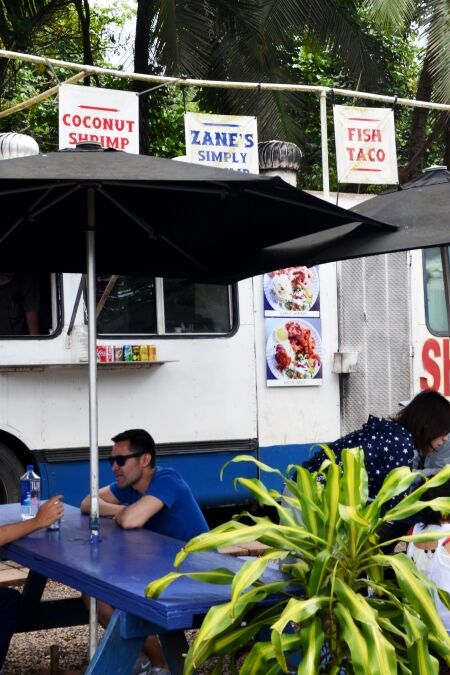The Kalalau Trail, along the stunning Na Pali Coast of Kauai, is widely regarded as one of Hawaii’s most iconic and challenging hikes. This trail offers breathtaking views that seamlessly blend ocean and mountain landscapes, taking hikers through diverse terrains ranging from lush valleys to rugged cliffs. Ideal for experienced hikers and adventure seekers, this article provides a comprehensive guide to navigating the Kalalau Trail, ensuring you’re fully prepared to tackle this extraordinary journey.
Highlights
- The Kalalau Trail offers unparalleled views of the Na Pali Coast, with dramatic cliffs, lush valleys, and endless ocean vistas that make for stunning photo opportunities at every turn.
- This 11-mile trail is a rewarding challenge for experienced hikers, offering a blend of rugged terrain, steep climbs, and river crossings.
- Along the trail, you’ll discover secluded beaches like Hanakapiai and Kalalau Beach, perfect for taking a refreshing dip, sunbathing, or simply enjoying the serenity of a hidden paradise.
- Kalalau Valley, the trail’s endpoint, is steeped in Hawaiian history, offering a glimpse into ancient Hawaiian life with archaeological sites and sacred grounds.
- For those willing to hike the full length, the Kalalau Beach campsite offers a unique opportunity to sleep under the stars with the sound of the ocean and views of towering cliffs.
History
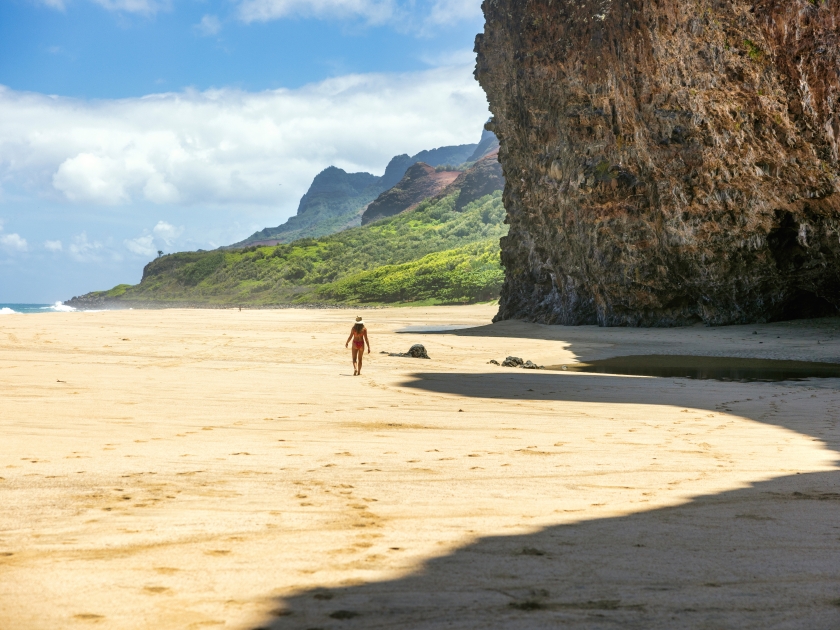
Centuries Ago
Centuries ago, Native Hawaiians established vibrant communities in the Kalalau Valley, utilizing the fertile land to grow taro, fish in the abundant seas, and live in harmony with the rugged landscape. Today, visitors can still see the remnants of these ancient settlements, including stone-walled terraces that testify to the valley’s rich history.
Trail Evolution
In the late 1800s, a horse trail was created to connect the isolated communities of Kalalau and Hanakoa. By the early 1900s, the trail was expanded for foot traffic, and by the mid-20th century, it gained popularity as a hiking destination, drawing adventurers and nature enthusiasts to its challenging paths.
Hippie Era and Conservation
During the 1960s and 1970s, the Kalalau Valley became a refuge for hippies seeking an alternative lifestyle in seclusion. To protect this unique environment, Hawaii began regulating camping and hiking in the area in the 1970s. By the 1980s, the Kalalau Trail was officially designated as part of a state park, ensuring its preservation for future generations.
Modern-Day Significance
The Kalalau Trail is now one of Hawaii’s most popular and challenging hikes, attracting thousands of visitors annually. However, the trail faces ongoing environmental challenges, including erosion and human impact, prompting continuous efforts to protect and preserve its natural beauty and ecosystems.
Trail Overview
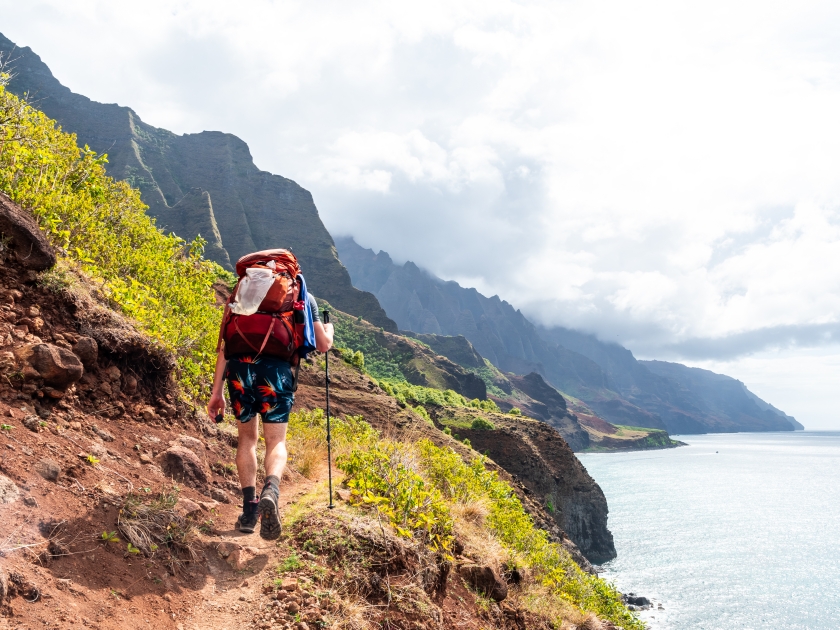
Distance & Difficulty
The Kalalau Trail spans a demanding 22-mile round trip, making it one of the most strenuous hikes in Hawaii. The trail is divided into key sections: the initial stretch from Ke’e Beach to Hanakapiai Beach (2 miles), followed by a more challenging 4-mile trek from Hanakapiai to Hanakoa, and the final 5-mile leg from Hanakoa to Kalalau Beach. Each segment presents its unique challenges, from stream crossings to narrow, cliff-hugging paths, requiring hikers to be well-prepared and physically fit.
Elevation Gain
Throughout the hike, you’ll experience significant elevation changes, with the trail ascending nearly 5,000 feet. The steep climbs, particularly around the Hanakoa and Kalalau valleys, test even the most seasoned hikers, rewarding them with stunning panoramic views as they navigate the rugged terrain.
Estimated Time
Given the strenuous nature of the Kalalau Trail, it’s recommended to allocate at least two to three days to complete the hike, allowing for rest and exploration. Day hikers often aim to reach Hanakapiai Beach or Falls and return, while those trekking to Kalalau Beach typically camp overnight, taking time to fully absorb the trail’s breathtaking scenery.
What to Expect on the Trail
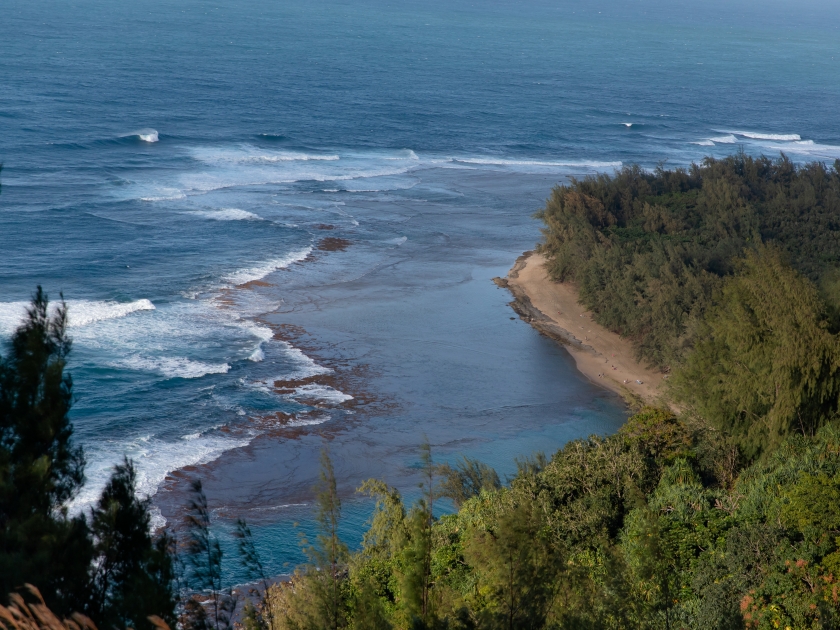
Scenic Highlights
As you journey along the Kalalau Trail, you’ll encounter some of the most breathtaking sights Kauai has to offer. Key highlights include the majestic Hanakapiai Falls, cascading over 300 feet, the thrilling narrow cliffs that offer dramatic views of the Na Pali Coast, and panoramic vistas that stretch endlessly across the Pacific Ocean, making every step an unforgettable experience.
Flora and Fauna
The trail is a haven for nature enthusiasts, with an abundance of unique plant and animal life. You’ll walk through lush valleys filled with native Hawaiian plants like koa and ohia trees, while keeping an eye out for native bird species, such as the endangered Hawaiian goose (nene) and the vibrant ‘i‘iwi, adding to the trail’s rich biodiversity.
Trail Conditions
The Kalalau Trail is known for its challenging conditions, which can be both thrilling and demanding. Expect to navigate through muddy paths, cross swift streams, and tackle narrow ridges with steep drop-offs. These conditions, combined with the trail’s length and elevation changes, make it essential for hikers to be well-prepared and cautious throughout their journey.
Safety Tips for Hiking Kalalau Trail
Essential Gear
When hiking the Kalalau Trail, it’s crucial to be well-equipped with essential gear. Sturdy hiking boots with good traction, trekking poles for stability, and sufficient water for the entire journey are must-haves. Additionally, pack a first aid kit, high-energy snacks, a reliable map, and a lightweight, weather-resistant tent if you plan to camp overnight.
Weather Considerations
The weather on the Na Pali Coast can change rapidly, turning a sunny day into a stormy one with little warning. It’s important to check the weather forecast before setting out and be prepared for sudden rain showers, strong winds, and high humidity. Bringing a rain jacket and extra dry clothing can make a big difference in comfort and safety during your hike.
Trail Hazards
The Kalalau Trail is notorious for its hazards, including the risk of flash floods, especially in the Hanakapiai and Hanakoa valleys. Slippery terrain, particularly after rain, and falling rocks along the cliffs add to the danger. Hikers should be vigilant, take their time navigating these risky areas, and be prepared to turn back if conditions become unsafe.
Camping at Kalalau Beach
Camping at Kalalau Beach offers a truly immersive experience on Kauai’s remote Na Pali Coast, where you can set up your tent amidst stunning natural beauty. While there are no formal facilities, campers can find freshwater streams nearby, but it’s crucial to treat the water before drinking. Adhering to Leave No Trace principles is essential to preserve the pristine environment. For the best experience, set up camp near the cliffs for spectacular ocean views and easy access to water sources. While enjoying your stay, be prepared for potential wildlife encounters, including curious feral goats and native birds. For those looking for a more structured camping experience, YMCA Camp Naue is a great alternative, offering basic amenities a bit farther from the trail.
Best Time to Hike Kalalau Trail
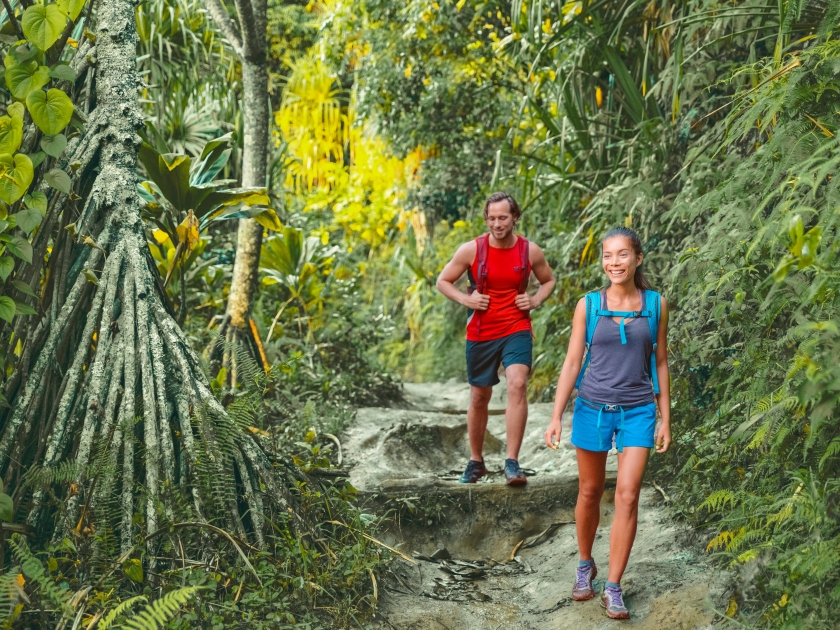
The best time to hike the Kalalau Trail is during the dry season, from May to October when the weather is more stable and the trail conditions are safer. Hiking during the rainy season, from November to April, increases the risk of flash floods, slippery paths, and hazardous stream crossings, making the trek much more dangerous. To avoid the crowds, plan your hike for weekdays or start early in the morning, as peak times during the dry season can draw large numbers of hikers. For a more secluded experience, consider hiking in the shoulder months of May or October, when the weather is favorable, and the trail is less crowded.
Preparing for the Hike
Preparing for the Kalalau Trail requires both physical conditioning and careful planning. Begin training several months in advance with regular cardio exercises, strength training, and practice hikes on steep terrain to build the endurance needed for this strenuous trek. Your packing list should include essential items like a sturdy backpack, lightweight camping gear, enough food and water for the entire trip, and emergency equipment such as a first aid kit and a multi-tool. Equally important is following Leave No Trace principles—pack out all trash, minimize campfire impact, and respect the natural environment to help preserve the trail’s pristine beauty for future hikers.
Post-Hike: Recovery and Relaxation
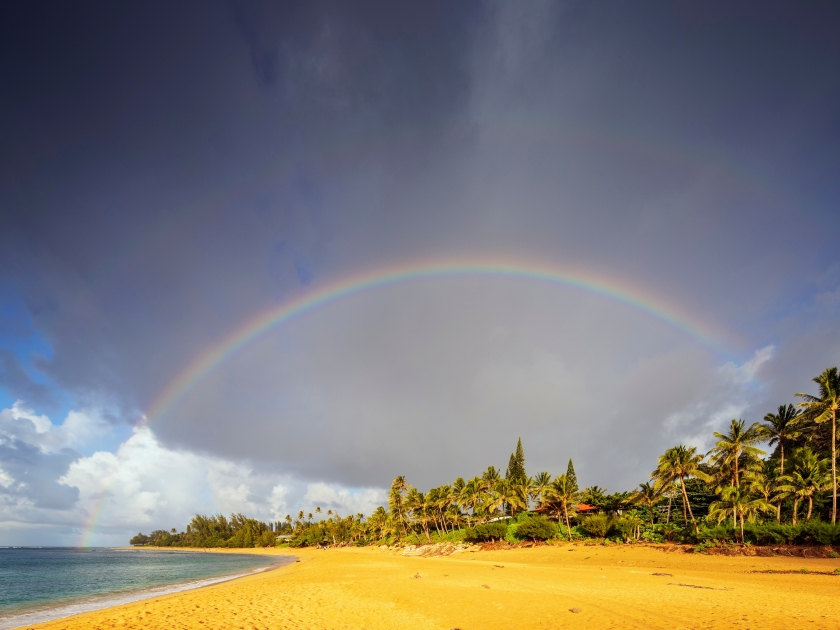
Nearby Attractions
After completing the Kalalau Trail, take some time to explore the nearby attractions on Kauai’s North Shore. Ha’ena State Park is perfect for a relaxing visit, where you can unwind at the beautiful Ke’e Beach or explore the rich flora at Limahuli Garden & Preserve, part of the National Tropical Botanical Garden. These spots offer a serene contrast to the rugged trail, allowing you to soak in the natural beauty at a more leisurely pace.
Local Dining Options
Refuel after your hike by indulging in traditional Hawaiian cuisine at local eateries. Mr. Wagon, known for its delicious plate lunches, offers a taste of authentic island flavors. For a more sit-down experience, head to Opakapaka Grill and Bar, where you can enjoy fresh seafood and Hawaiian-inspired dishes while taking in the stunning ocean views—an ideal way to end your adventure.
Frequently Asked Questions (FAQs)
Yes, a permit is required to hike beyond Hanakapiai Valley on the Kalalau Trail, as it enters the Na Pali Coast State Wilderness Park.
Yes, parts of the Kalalau Trail, particularly the section known as “Crawler’s Ledge,” are narrow and can be hazardous, especially in wet conditions.
The Kalalau Trail is not recommended for beginners due to its challenging terrain and steep, narrow paths.
Yes, a permit is required to hike the entire Kalalau Trail, especially for the section beyond Hanakapiai Valley.
Completing the Kalalau Trail typically takes 2-3 days, depending on your pace and camping plans.
While there are no guided tours for the entire Kalalau Trail, guided day hikes to Hanakapiai Falls are available.
How to Get There
By Car
To reach the Kalalau Trail by car, start your journey by heading to the northern coast of Kauai. Drive along Highway 56 and take Highway 560 towards Haena State Park. Follow the road until you reach the end, where you’ll find a parking area. It’s important to arrive early, especially during peak season, as parking fills up quickly. Note that the trailhead is located near the park entrance, and you will need to pay the park entrance fee.
By Bus
If you prefer public transportation, you can take the Kauai Bus from various locations on the island to Haena. Look for the Route 20 or Route 30 buses that service the north shore. Check the current bus schedule for the latest times, as services may vary. Once you arrive at the Haena stop, it’s a short walk to the trailhead. Be sure to plan your return trip accordingly to avoid missing the last bus of the day.
Conquer the Kalalau Trail
This unforgettable adventure tests your limits and rewards you with some of the most awe-inspiring views on Earth. Each step along this rugged path is a brushstroke in a masterpiece of nature, leaving you with memories as vivid as the Na Pali Coast itself. If you’re ready to embrace the challenge, start planning your hike responsibly—prepare well, respect the environment, and immerse yourself in the journey of a lifetime. The trail is calling; will you answer?



